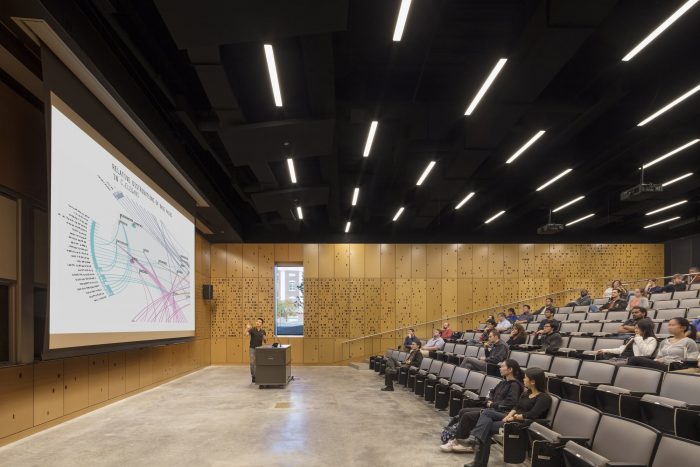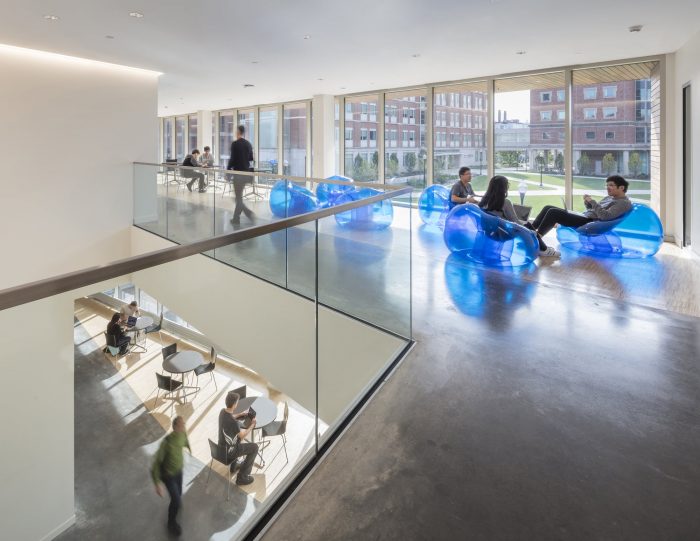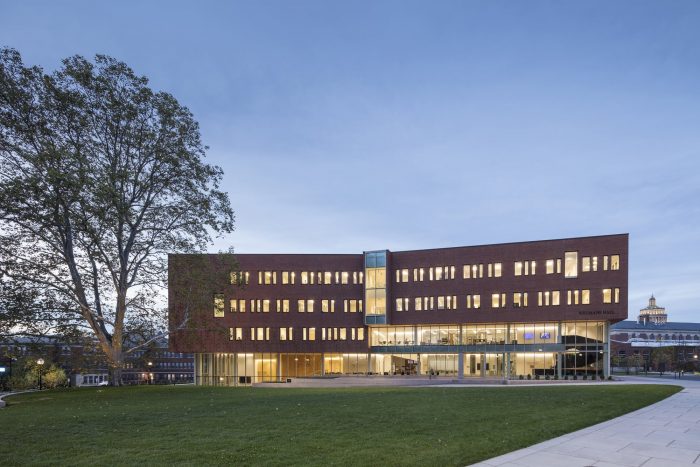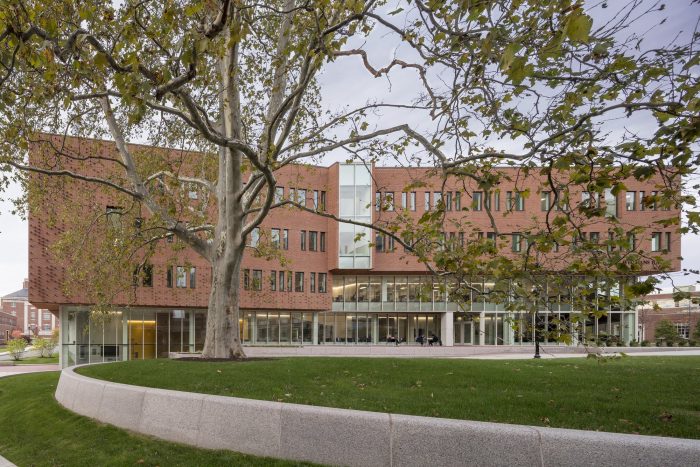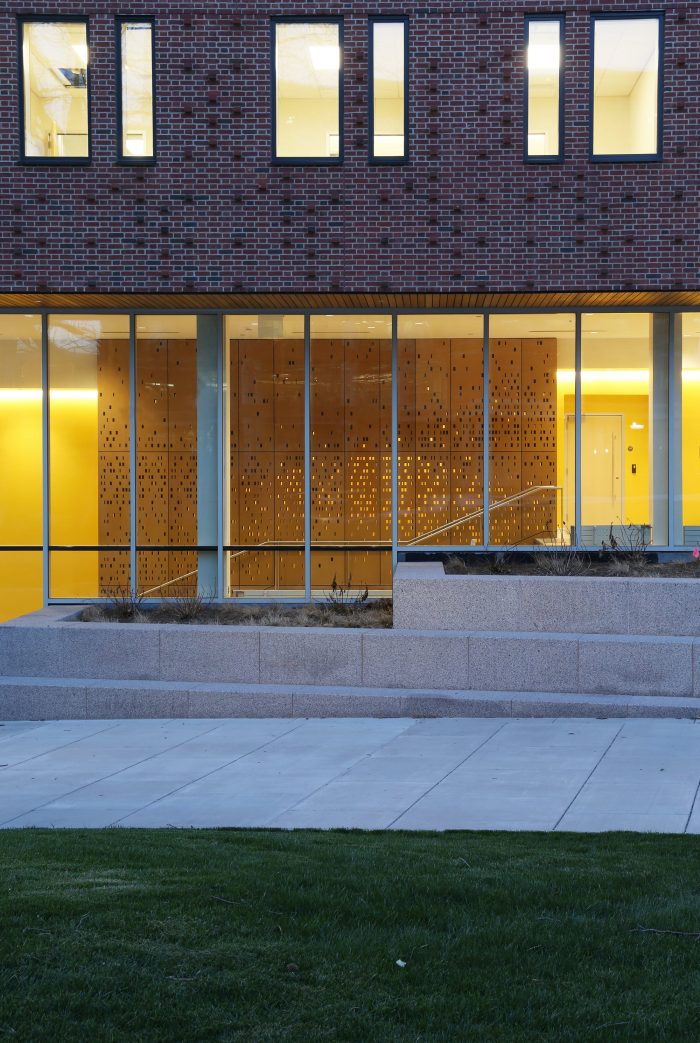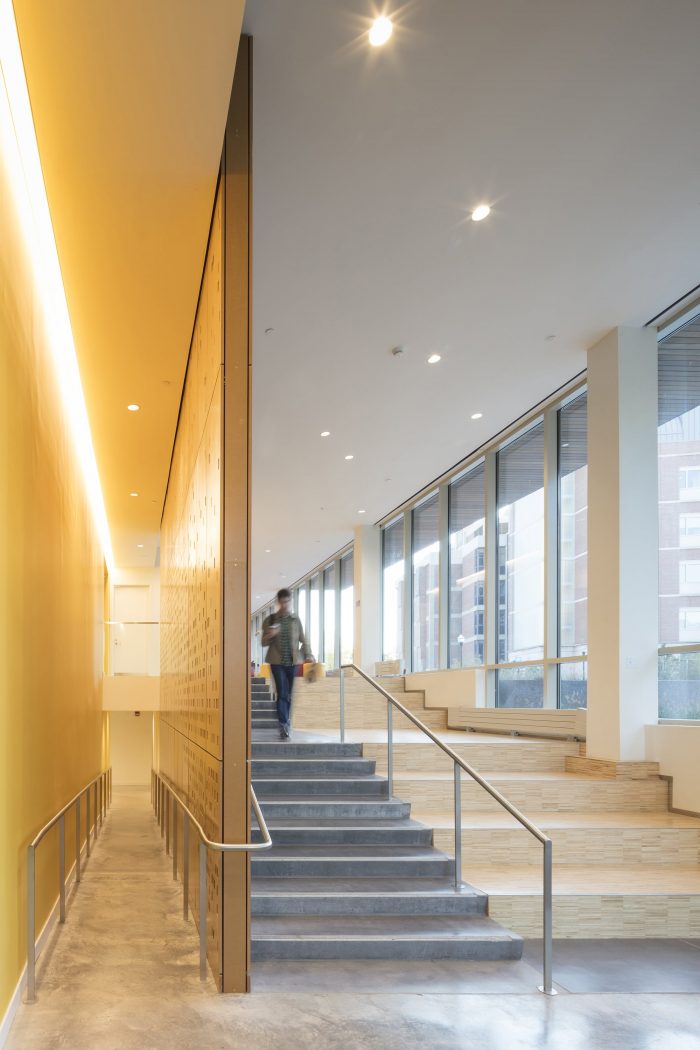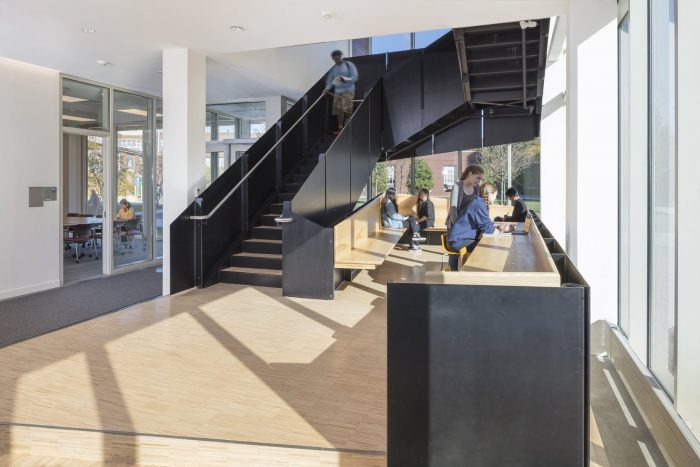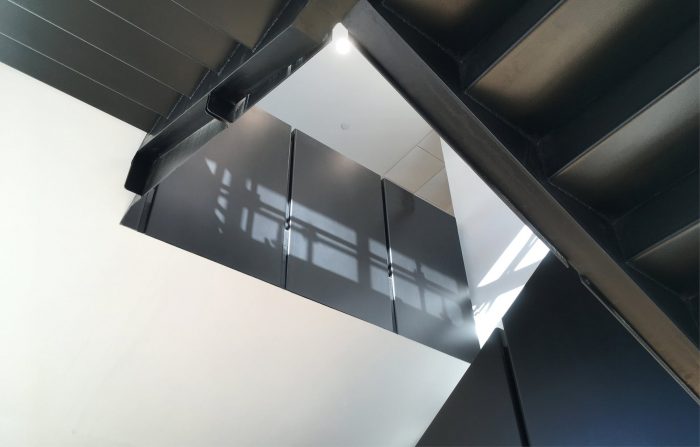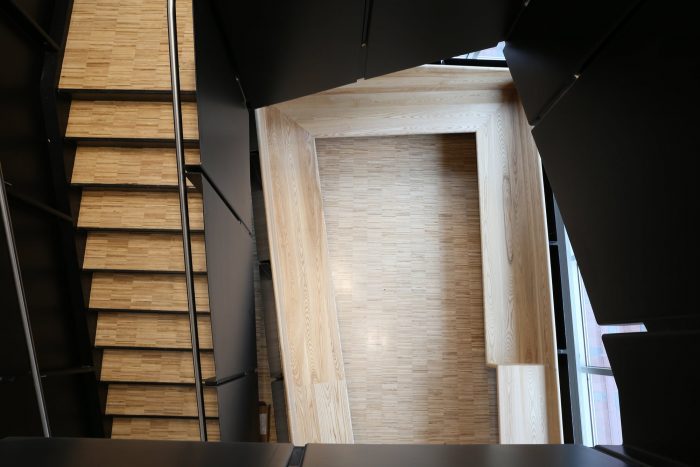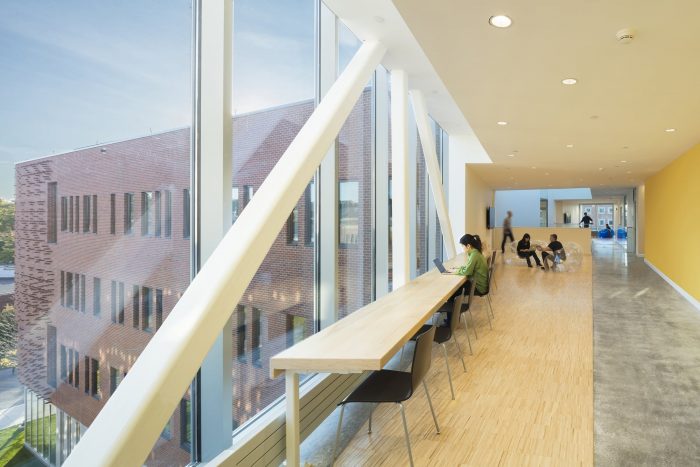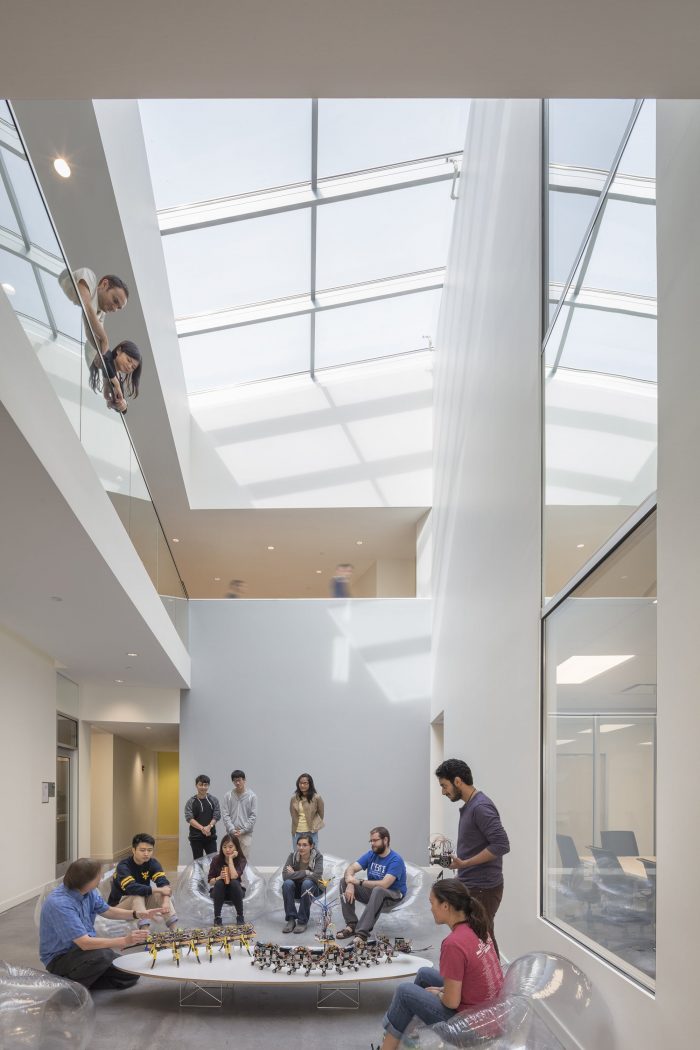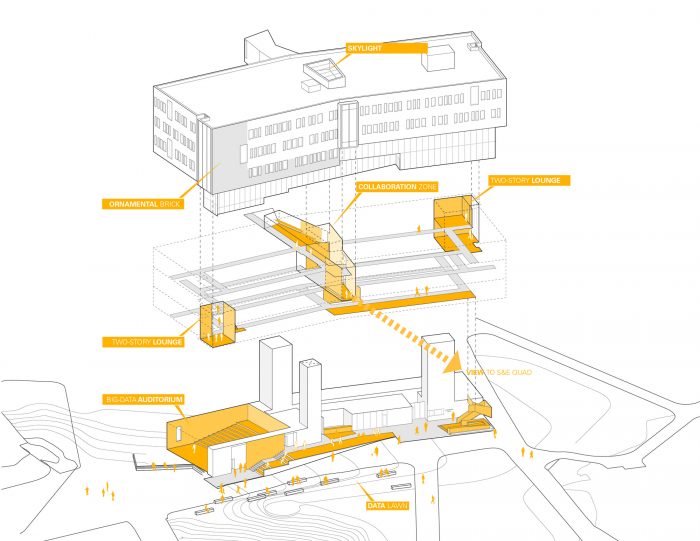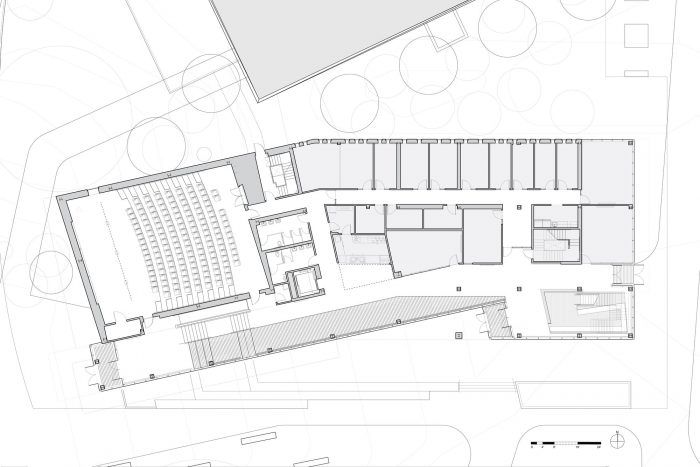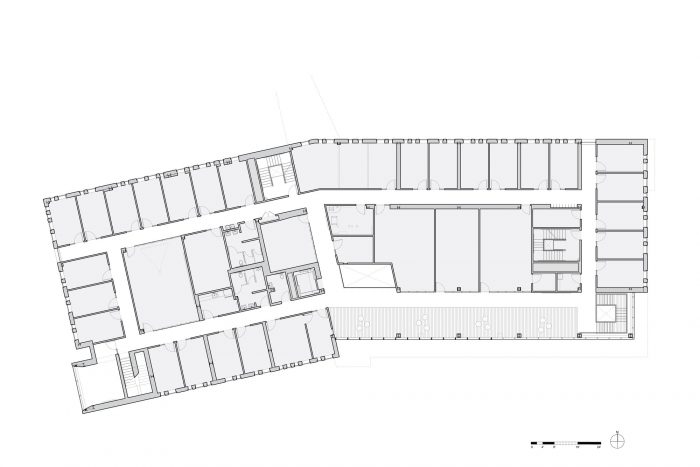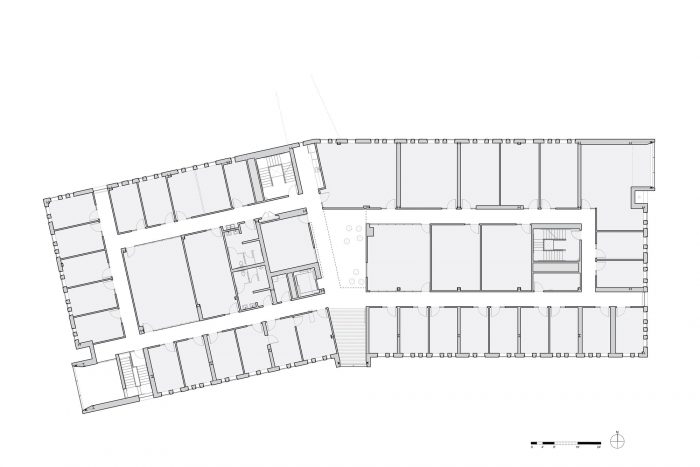罗切斯特大学新的数据科学研究所是罗切斯特大学战略计划的标志性重点,在跨学科研究和创新的新教育模式中突出了信息技术。按照LEED银级标准设计的61,000平方英尺的建筑项目包括智能教室和教师办公室、机器人、科学、计算和环境实验室、一个160个座位的礼堂和Goergen研究所,一个新的信息技术公共资源。
The new Institute of Data Science at the University of Rochester is the signature focus of the University of Rochester’s Strategic Plan to foreground information technology in a new educational model for cross-disciplinary research and innovation. Designed to LEED Silver standards, the 61,000 square foot building program includes smart classrooms and faculty offices, robotics, science, computation and environmental labs, a 160-seat auditorium and the Goergen Institute, a new public resource for information technology.
数据科学研究所的体量是由一个简单的矩形体创造的,它被 “打破 “了,将两个校园的几何形状结合在一起:它为吉尼斯河提供了一个新的公共面孔,并完成了科学与工程四合院,将外部的车辆道路转化为一个新的2英亩的行人和自行车导向的校园景观。
The massing of Institute of Data Science is created from a simple rectangular volume that is “broken” to unite two campus geometries: it offers a new public face to the Genesee River and completes the Science & Engineering Quadrangle transforming exterior vehicular roadways into a new 2-acre pedestrian and bicycle- oriented campus landscape.
公共流通序列表现在外立面上,大型垂直玻璃窗 “突破 “了砖块围护结构,反映出双层高度的合作区和共享的俯瞰区,将自然光深入到建筑内部。一层和二层的双高幕墙与上层的挂砖图交相辉映,表达了研究所的使命,即创造一个开放和协作的研究文化,使更新的科学与工程四区的绿色空间参与其中。
The public circulation sequence is expressed on the exterior facades, with large vertical glazed bays that “breakthrough” the brick envelope to reflect double-height collaboration zones and shared overlooks that admit natural light deep into the building interior. A double height curtain wall on the first and second levels interlocks with the figure of hung brick on the upper floors and expresses the Institute’s mission to create an open and collaborative research culture that engages the green space of the renewed Science & Engineering Quad.
砖和数据科学
为了满足数据科学的研究使命,设计对砖块采取了不同的概念和建设性的方法。该项目改造了大学的标准红砖,在设计中把每块砖都当作一个数字信息 “像素”,能够在校园环境中表达其与建筑整体几何形状的关系。所教的砖皮被细分为流水线和佛兰德邦德图案,佛兰德邦德区的凸出头砖采用数字三维建模软件中的生成算法进行设计。这创造了纹理砖块的 “数据流”,提供了对建筑群对河流和校园转折的解读。凸出的砖块的阴影激活了外墙,创造出动态的、有质感的表面,传达出自然环境的数据,这些信息在建筑的砖块表面上有多种尺度可读。窄的和宽的打孔窗的灵感来自于二进制的0/1,这是数据编码的基础。
Brick and Data Science
To meet the Data Sciences research mission, the design takes a different conceptual and constructive approach to brick. This project transforms the University’s standard red brick in a design that treats each brick as a digital “pixel” of information capable of expressing its status in relation to the building’s overall geometry in the campus context. The taught brick skin is subdivided into running and Flemish bond patterns with projecting header bricks in the Flemish bond zones designed using generative algorithms visualized in digital 3D modeling software. This creates “data streams” of textured brickwork which provide a reading of the massing’s inflections to the river and the campus. Shadows from the projecting bricks activate the facades creating dynamic, textural surfaces that communicate natural environmental data across the days and seasons—- information which is made legible at multiple scales across the building’s brick surfaces. Narrow and wide punched windows are inspired by the binary 0 / 1 that is fundamental to encoding data.
协作空间
在室内,社会协作空间被整合到一个宽敞的公共流通序列中,该序列沿着建筑的周边,与每一层楼的双高协作区相连接,可以看到吉尼斯河和科学与工程四区。协作空间的序列在一个双层高度的共享实验室空间达到高潮,该空间有天窗,可以俯瞰四方区,并通过一座新的桥梁与邻近的霍普曼大厅相连。实验室空间被设计成与合作空间相邻,使用模块化海湾系统,支持灵活性和跨学科研究项目。所有的内部实验室走廊都以窗户为终点,将自然光引入建筑内部深处。
Collaboration Spaces
In the interior, social collaboration spaces are integrated into a generous public circulation sequence, which follows the building perimeter and engages each floor level with double-height collaboration zones with views to the Genesee River and the Science & Engineering Quad. The sequence of collaboration space culminates at a double-height shared lab space with skylights that overlook the Quad and is linked by a new bridge to neighboring Hopeman Hall. Lab spaces are designed adjacent to collaboration spaces, using a modular bay system which supports flexibility and interdisciplinary research projects. All interior lab corridors terminate with window overlooks which 6 admit natural light deep into the building interior.
Architects: Kennedy & Violich Architecture
Area : 61000 ft²
Year : 2017
Photographs :John Horner
Manufacturers : RHEINZINK, Kaswell, Kawneer, Viracon
City:ROCHESTER
Country:UNITED STATES





